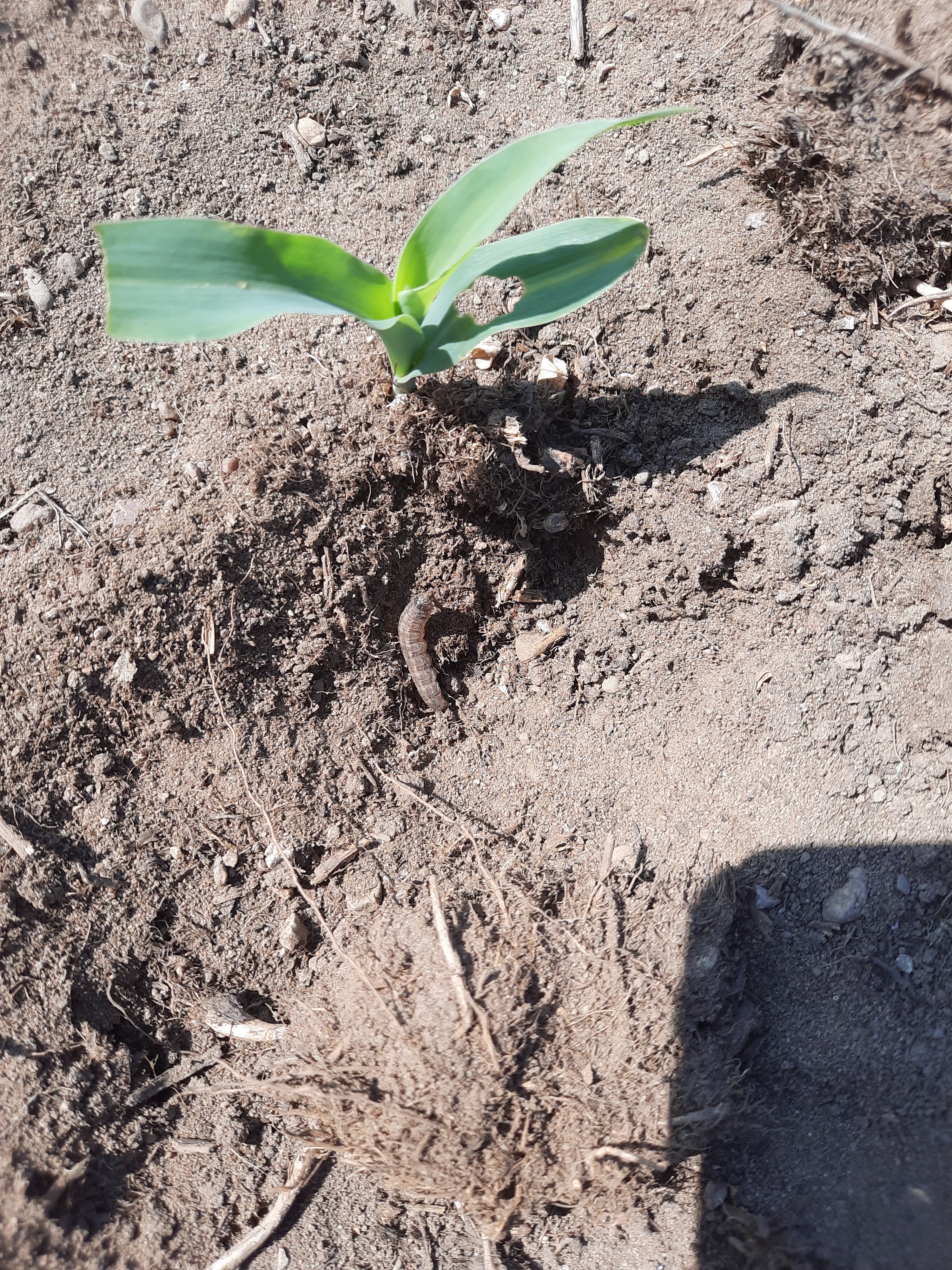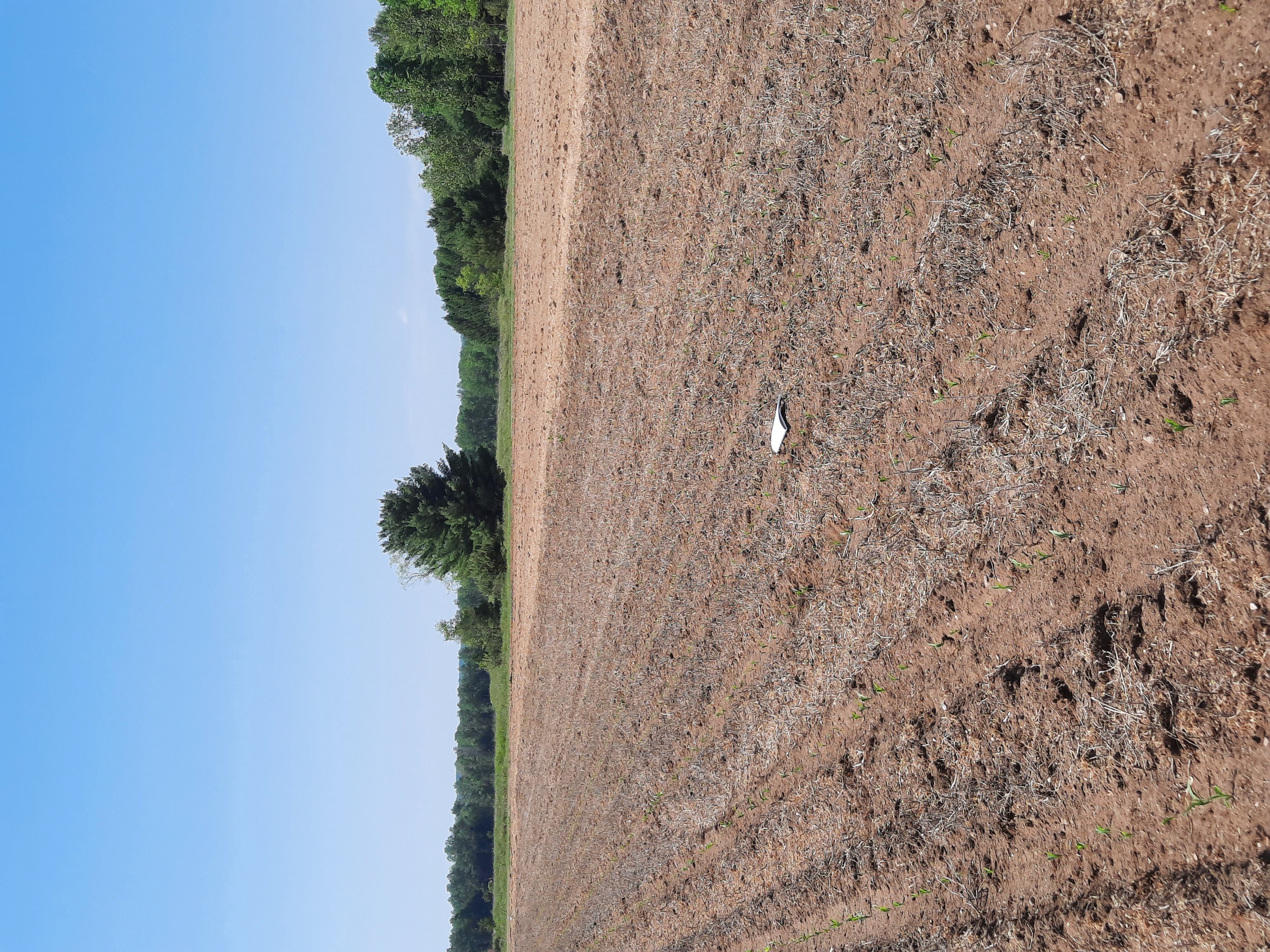Scouting cutworms in Osceola County corn
Cutworms were recently discovered in an Osceola County corn field.

Field preparation and planting of field crops like corn and soybean are wrapping up across the state and Michigan farmers are quickly moving on to crop maintenance as the next priority. An important component of maintaining a recently planted crop is pest management. Scouting is an effective and important part of field crop production because early detection of common pests will lead to successful control. The old adage of “the footsteps of a farmer is the best fertilizer” reigns true here. In order to ensure a successful final stand of the crop, you need to monitor fields for weeds, pests and diseases continually throughout the season.
A local agronomist for a large farm recently discovered cutworms in a field in Michigan’s Osceola County and contacted Michigan State University Extension about the pest. MSU Extension field crop educators work with local agronomists to relay agriculture research and information to producers. In this case, scouting was performed on recently damaged corn to determine the culprit. A pest sporadically found in field crops here in Michigan is black cutworm. Cutworms are found throughout the Midwest, including Michigan. It was suspected based on the crop damage that cutworms were present in the field.
Cutworms migrate into Michigan in early spring from the south as adult black cutworm moths. The moth lays eggs on available vegetation in field margins, ditches, field residues, cover crops and densely growing broadleaf weeds. If herbicides are used to control weeds, the larvae will then move to feed on newly emerged green plants upon hatching. You can identify this above ground feeding by looking for pinholes or shot-holes in leaves, chewed leaf edges or the tops of seedlings cut off entirely.

Larger cutworms can be found feeding below ground next to the seedling. It has been extremely dry and hot, which prompted scouts to dig below the surface of the soil next to the emerged plant in search of the cutworms.

This field is a year one managed field for this farm. The field was in fallow prior to planting corn and a burndown herbicide application was made prior to a no-till planting of field corn. Next to the field is a less-managed fallow field where the pest was discovered. It is important to note the proximity to the field’s margin where a fallow field is located. Eggs are commonly laid in field margins or in fields with high crop residues or cover crops, which is likely where the cutworms originated in this case.

The cutworms were collected in a sample jar and preserved by pouring boiling water over the sample, cooking the worms like an egg for one minute to retain plumpness and color. The cutworm samples were then preserved in ethanol.
Cutworms can be a devastating pest to field crops like corn. There can be several generations per season, but typically the first generation is the most damaging as it coincides with early crop emergence. The current pest status in Michigan for the cutworm is sporadic with outbreaks occurring after any heavy spring flight from the south. This year, cutworm numbers were very low with a possible exception in early April when strong thunderstorms entered the state through the south. It is possible that the lack of storm systems in Michigan thus far will mean migrating pest populations will be lower this year. If you have fields that had late-terminated cover crops or winter annual weeds, or that are no-till, be on the lookout for this pest early in the crop’s emergence.
For more information on cutworms, read the article “Watch for cutworms” by MSU Extension’s field crop entomologist Christina DiFonzo.



 Print
Print Email
Email
